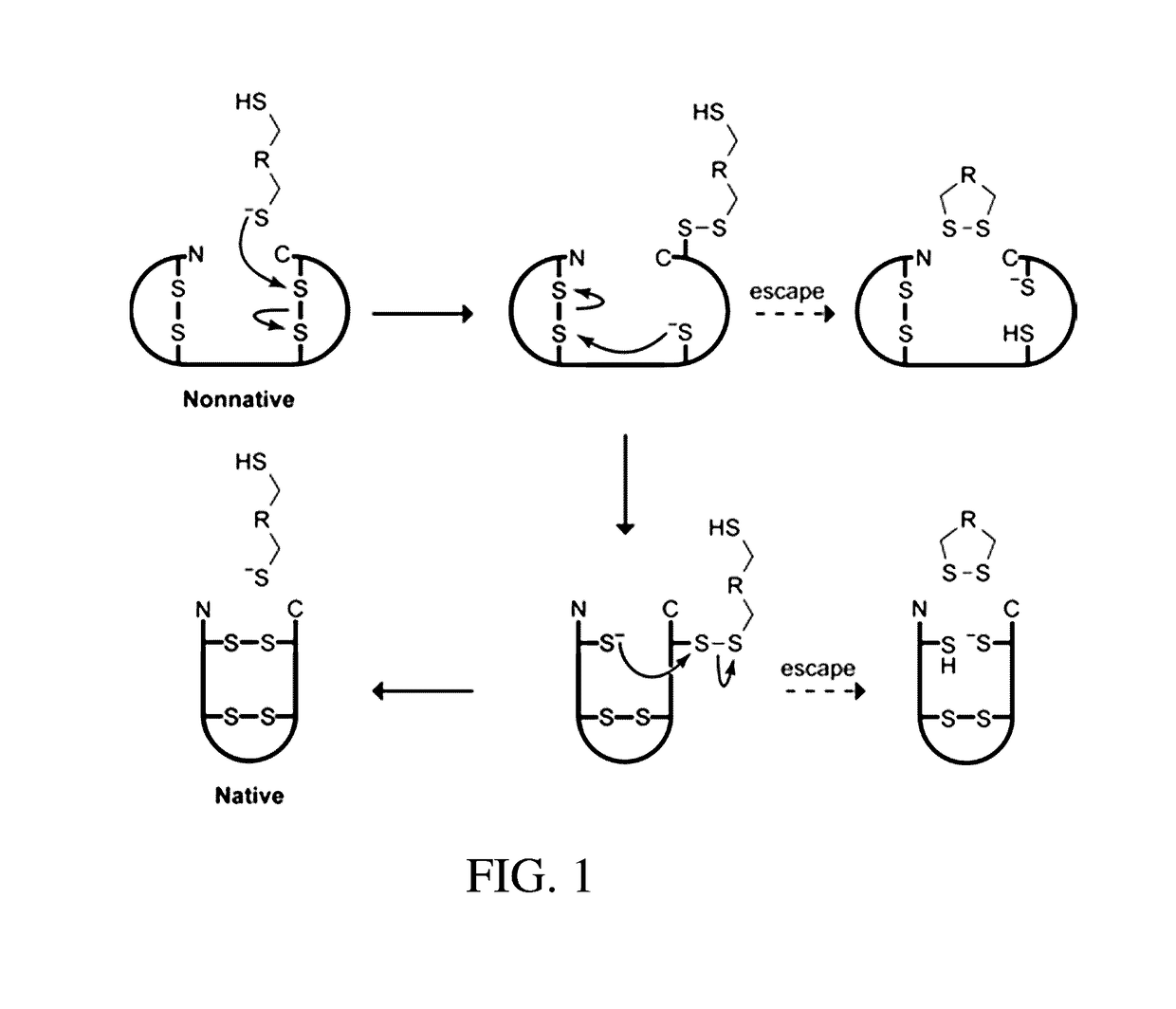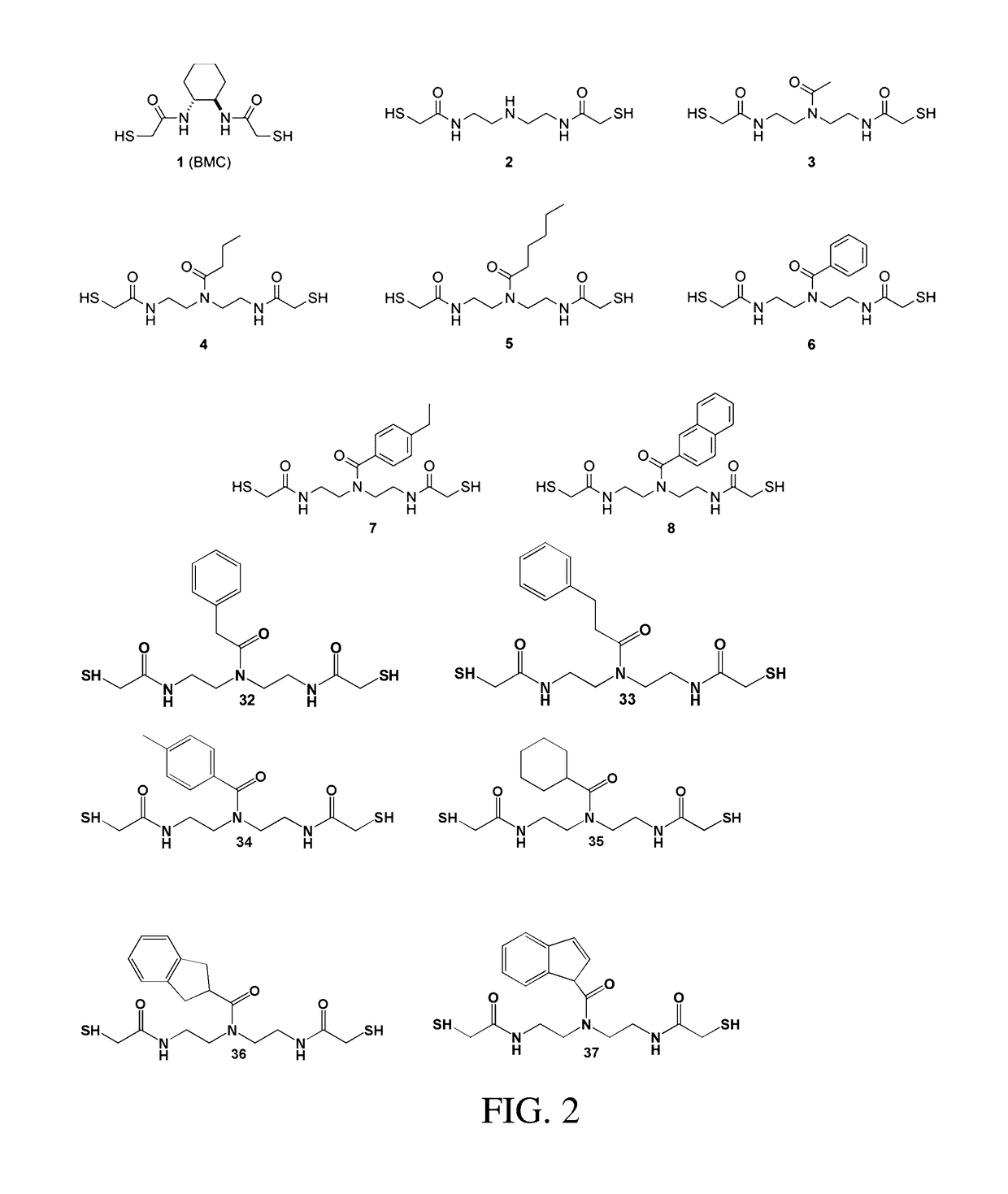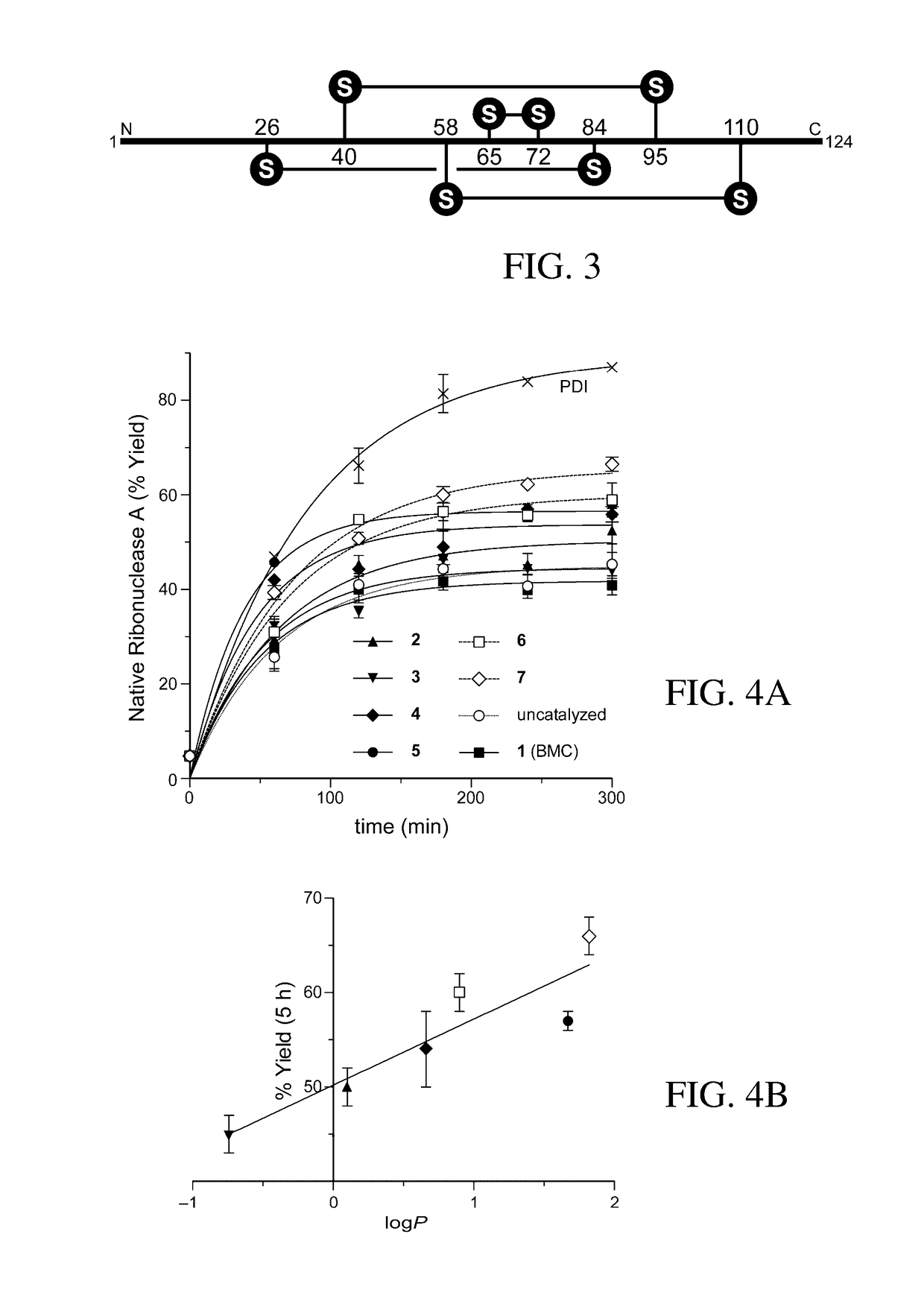Organocatalysts of oxidative protein folding
a technology of organic catalysts and proteins, applied in the field of organic catalysts of oxidative protein folding, can solve the problem of impracticality of large-scale use of pdi as a catalyst for folding proteins in vitro, and achieve the effect of facilitating the proper expression
- Summary
- Abstract
- Description
- Claims
- Application Information
AI Technical Summary
Benefits of technology
Problems solved by technology
Method used
Image
Examples
example 1
Materials and Methods
[0126]Commercial reagents were used without further purification. β-Mercaptoethanol (βME), oxidized β-mercaptoethanol (βMEox), and diethylenetriamine were from Sigma-Aldrich (St. Louis, Mo.). RNase A was from Sigma-Aldrich and purified further by cation-exchange chromatography. The RNase A substrate 6-FAM-dArUdAdA-6-TAMRA was from Integrated DNA Technologies (Coralville, Iowa). All glassware was oven- or flame-dried, and reactions were performed under N2(g) unless stated otherwise. Dichloromethane and tetrahydrofuran (THF) were dried over a column of alumina. Triethylamine was dried over a column of alumina and purified further by passage through an isocyanate scrubbing column. Flash chromatography was performed with columns of 40-63 Å silica, 230-400 mesh from Silicycle (Québec City, Canada). Thin-layer chromatography (TLC) was performed on plates of EMD 250-μm silica 60-F254. The term “concentrated under reduced pressure” refers to the removal of solvents and ...
example 2
Chemical Synthesis
A.
[0127]
[0128]BMC (1) was synthesized as a racemate from (±)-trans-1,2-diaminocyclohexane as described previously. [9] An analytically pure sample of BMC was obtained by reverse-phase HPLC using a preparatory C18 column and a linear gradient of 10-80% v / v acetonitrile (0.1% v / v TFA) in water (0.1% v / v TFA) over 45 min. BMC eluted at 23 min and, after lyophilization, was isolated as a white powder.
[0129]1H NMR (400 MHz, DMSO-d6) δ=7.83 (d, J=5.3 Hz, 2H), 3.52-3.48 (m, 2H), 3.09-2.99 (m, 4H), 2.60 (t, J=7.9 Hz, 2H), 1.79-1.77 (m, 2H), 1.66-1.65 (m, 2H), 1.24-1.20 (m, 4H); 13C NMR (100 MHz, CDCl3) δ=169.2, 52.2, 31.7, 27.3, 24.3; HRMS (ESI) calculated for [C10H19N2O2S2]+ (M+H+) requires m / z=263.0883. found 263.0895.
B.
[0130]
[0131]To a flame-dried round-bottom flask was added 9 (0.847 g, 4.166 mmol), which was synthesized as described previously. [30] Dichloromethane (50 mL) was then added, and the resulting solution was cooled to 0° C. under an atmosphere of N2(g). Nex...
example 3
Determination of Thiol pKa Values
[0214]The thiol pKa values for 2 and 7 were determined by closely following a procedure reported previously that exploits the elevated absorbance of the deprotonated thiolate at 238 nm. [72] Plots of A238 vs pH were recorded (FIGS. 5 and 6), and pKa values were determined by fitting these data to eq 1, which was derived from Beer's law and the definition of the acid dissociation constant. [9, 55]
[0215]A238=CT(ɛS-S-10(pH-pKa2)+ɛSHS-+ɛSHSH10(pKa1-pH)10(pH-pKa2)+1+10(pKa1-pH))(1)
[0216]In eq 1, CT is the total thiol concentration, εSHSH is the extinction coefficient of the doubly protonated form of 2 or 7, εSHS− is the extinction coefficient of the singly protonated form of 2 or 7, and εS−S− is the extinction coefficient of the doubly deprotonated form of 2 or 7.
PUM
| Property | Measurement | Unit |
|---|---|---|
| pKa | aaaaa | aaaaa |
| standard reduction potential | aaaaa | aaaaa |
| pKa | aaaaa | aaaaa |
Abstract
Description
Claims
Application Information
 Login to view more
Login to view more - R&D Engineer
- R&D Manager
- IP Professional
- Industry Leading Data Capabilities
- Powerful AI technology
- Patent DNA Extraction
Browse by: Latest US Patents, China's latest patents, Technical Efficacy Thesaurus, Application Domain, Technology Topic.
© 2024 PatSnap. All rights reserved.Legal|Privacy policy|Modern Slavery Act Transparency Statement|Sitemap



